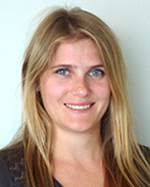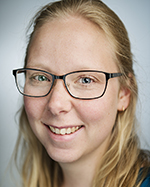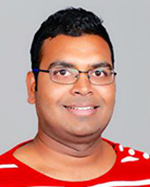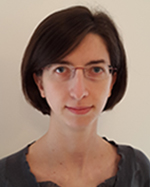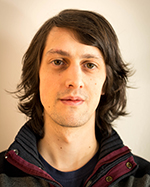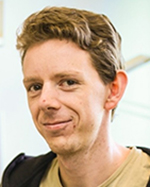Tidligere arrangementer - Side 28
M.Sc. Lene Norderhaug Drøsdal ved Fysisk institutt vil forsvare sin avhandling for graden ph.d: "LHC Injection Beam Quality During LHC Run I"
The conference aims to promote scientific exchange and the development of novel ideas, with a particular emphasis on interdisciplinarity.
Master i fysikk Jørgen Kjoshagen Trømborg ved Fysisk institutt vil forsvare sin avhandling for graden ph.d: "Modelling the onset of frictional sliding: Rupture fronts, slow slip, and time-dependent junction laws".
Yong Tang, KIAS
This talk will discuss some possible connections between neutrinos and dark matter, in light of astrophysical observations. Contents include self-interacting dark matter, sterile neutrinos and IceCube Events.
The slides are now available.
En trådløs nevral opptaker til ekstracellulære observasjoner
Complete kinematics reconstruction in the golden cascade
Molecular Dynamics Modeling of Clay-Fluid Interfaces
Exploration of ZnO and ZnMgO/ZnO Thin Film Transistors
Molecular dynamics simulations of nanostructured tight rocks
In situ operando SAXS and WAXS characterization of the anode materials (a-P/C and FeSb2) for rechargeable sodium ion batteries
Kalliopi Petraki, NIKEF Amsterdam [slides]
Observations of the galactic and sub-galactic structure of our universe suggest that a shift from the collisionless cold dark matter paradigm may be needed. Dark matter with sizable self-interactions offers a compelling explanation of these observations.
Particle physics models of self-interacting dark matter can be well accommodated within the asymmetric dark matter scenario. Asymmetric dark matter hypothesizes that the relic dark matter abundance is due to an excess of dark particles over antiparticles, and allows for sizable and direct couplings of dark matter to light force mediators.
In addition, the dark particle-antiparticle asymmetry may be related to the baryon asymmetry of the universe, thus offering a dynamical explanation for the similarity of the dark and the ordinary matter abundances. Exploring the low-energy phenomenology of self-interacting asymmetric dark matter, including the effect on the dynamics of dark matter halos and possible detection strategies, presupposes understanding the cosmology of these models, which can be quite involved. I will discuss the above, and illustrate them in the context of the atomic dark matter model.
M.Sc. Siv Gundrosen Aalbergsjø ved Fysisk institutt vil forsvare sin avhandling for graden ph.d.: "DFT as a tool for understanding biomolecular radiation damage"
Master of Electrical Engineering Naveen Goud Ganagona ved Fysisk institutt vil forsvare sin avhandling for graden ph.d: "Electrical characterization of impurity-defect complexes in silicon"
Monte Carlo simulations of Potts models with random power-law interactions
Portable Front-End Readout System for Radiation Detection
Søk etter nye dimyon-resonanser med ATLAS-detektoren ved LHC
Restoration of the Third Law of Thermodynamics in a Quantum Refrigerator Model
Investigation of the growth process of silicon from the gas phase in the Dynatec Centrifuge and Free Space Reactor
Hydrotermisk stabilitet av mikroporøse materialer med CHA topologi
Syntese og karakterisering av termoelektriske halv-Heusler materialer av typen (Ti,Zr,Hf)NiSn
Gas-dynamic computations of a small detonation using Large-Eddy Simulations
Synthesis and Characterization of Homoepitaxial ZnO Thin Films
Bioactive surfaces with atomic layer deposition
Kontroll av overflatefukting gjennom strukturering og kjemisk modifisering av overflater
Pulsassosiasjon og geolokalisering med bruk av radarpulsers ankomsttid til to plattformer i parallell bevegelse
Upconverting nanorods in silica film for use in CO2 -optodes: Synthesis and characterization of β-NaYF4:Yb,Er
Modellering av MEMS-treghetssensorer i et navigasjonssystem
Kamerabasert navigasjon ved hjelp av landemerker med ukjent avstand fra kameraplanet
Development of a full-size low price Automatic Survey Vessel (ASV) for hydroacoustic work
Kai Schmidt Hoberg, DESY, Hamburg [slides]
I will review motivations for the existence of self interacting dark matter and discuss possible astrophysical observables. Self-interactions of dark matter particles can potentially lead to an observable separation between the dark matter halo and the stars of a galaxy moving through a region of large dark matter density. Such a separation has recently been observed in a galaxy falling into the core of the galaxy cluster Abell 3827. I discuss the DM self-interaction cross section needed to reproduce the observed effects.
The research centre for dark matter, The Strategic Dark Matter Initiative - SDI, will officially be launched on Friday, and invites you all to a popular science lecture, with coffee and snacks.
Thomas Jacques, Université de Genève, Switzerland [slides]
As beyond-standard-model physics continues to elude discovery at the LHC, it becomes increasingly important to ask what we can learn about dark matter in a model-independent way. I will introduce the theory and usage of effective operators; these have become popular in recent years as a way to construct model-independent constraints on dark matter, but at LHC energies it is crucial to understand their significance and limitations, and how they can be used to compare the reach of vastly different experiments. With this in mind, I will also discuss the next step beyond effective operators, and techniques to link the search for missing energy with the much-sought-after Dark Matter.
Mark Burgess
Physics is probably the most successful science when it comes to describing how things behave, but it avoids interpreting the meaning or the intent of behaviours. In technology, especially IT, meaning and intent are at the top of the list when it comes to description, but IT fails to describe system dynamics convincingly. Promise Theory is an attempt to unify dynamical and semantic descriptions of systems, inspired by the successes of physics - and it sheds an interesting light on both fundamental physics and information science.
Laurea in Scienze Fisiche Beatrice Mandelli ved Fysisk institutt vil forsvare sin avhandling for graden ph.d: "Detector and System Developments for LHC Detector Upgrades"
Molecular Modeling of Fracture in Methane Hydrates
Master of Science Magnar Kopangen Bugge ved Fysisk institutt vil forsvare sin avhandling for graden ph.d: "Search for new charged bosons and dark matter in final states with one lepton and missing transverse energy with the ATLAS detector at the LHC"
Thomas Schwetz-Mangold, Stockholms Universitet [slides]
The observation of neutrino oscillations requires that neutrinos have a tiny but non-zero mass. This implies that the Standard Model of particle physics has to be extended in some way beyond its original formulation where neutrinos are massless. We review the present status of neutrino oscillations and give a brief outlook on future developments in the field. We speculate on the implications for physics beyond the Standard Model and discuss the challenges to identify the mechanism responsible for neutrino mass.
Nils-Erik Bomark, University of Warsaw
Within the MSSM, the heavy stops required to meet the experimental value of the Higgs mass, poses tension with naturalness, the main reason to believe in supersymmetry at LHC scales. This is alleviated in the NMSSM, where especially the possibility of a light singlet-like scalar can easily push the Higgs mass up to the measure value.
The presence of a singlet-like scalar and pseudoscalar gives rise to LHC phenomenology potentially rather different from the MSSM as these particles can be very light without coming in conflict with observations. In this presentation I will discuss the discovery prospects of these light pseudoscalars in the NMSSM. As direct production of such singlet-dominated particles is very difficult, the main focus will be on channels where heavier scalars decay to pairs of pseudoscalars or pseusodscalars and Z bosons. I will demonstrate that the LHC should be capable of probing a large part of the NMSSM parameter space through these channels.
Carmelo Evoli, Universität Hamburg [slides]
At GeV-TeV energies the propagation of CRs in our Galaxy is diffusive. Current models of galactic propagation are based on a simplified approach for which diffusion is constant and isotropic. In fact, diffusion transport must be described as in-homogenous and anisotropic and experimental data have now reached an accuracy that allows to study such effects.
In my talk, I will present some of the consequences of adopting realistic diffusion models for the propagation of galactic CRs, and I will show how these models allow a better understanding of local observations and diffusion emissions within an unified framework.
In the second part of my talk, I will focus on antiprotons as a tool to set constraints on DM models. In particular, I will discuss the uncertainties associated to both standard astrophysical and DM originated antiprotons. I will show on which extent current antiproton data can place tight constraints on DM models, excluding some of those suggested in connection with indirect and direct searches.
Marco Cirelli, Saclay, France [slides]
The field of Dark Matter Indirect Detection is in a thriving but somewhat chaotic moment: quite a few hints of possible detection of signals of DM (over a large range of masses and, in general, inferred properties) are confronted with stringent constraints, often based on the same experiments that provide the possible hints. In turn, this spurs a lot of theoretical activity, aimed at phenomenologically analyzing the claims and, perhaps, at embedding them in wider model building. I will briefly review the current status of the searches, mention the most debated hints and sketch the general directions of the theory activity.
Master of Science Per Harald Ninive ved Fysisk institutt vil forsvare sin avhandling for graden ph.d: "Towards a complete description of aluminium from atomistic modeling – A parameter-free study of hardening precipitates in Al alloys"
Daniele Gaggero, SISSA, Trieste, Italy [slides]
In the first part of the talk, after a general introduction on the physics of cosmic rays (CRs), I present a detailed overview on recent results regarding modeling of CR propagation in the Galaxy and in the Heliosphere. In particular I focus on the necessity to go beyond the standard and simplified picture of uniform and homogeneous diffusion, showing that gamma-ray data point towards different propagation regimes in different regions of the Galaxy. I also sketch the impact of large-scale structure on CR observables. Concerning the propagation of the Heliosphere, I mention the necessity to consider a charge-dependent modulation scenario.
In the second part, I discuss several aspects of the recent claim of a gamma-ray excess in the Galactic center region, discussing in particular the interpretation in terms of Dark Matter, compared to other astrophysical interpretations. I will emphasize the interplay between the non-trivial aspects of CR propagation discussed in the first part and the understanding of the GC excess origin. In particular, I will show in detail how the knowledge of the CR transport parameters and solar modulation is crucial to investigate the compatibility with other channels (namely antiprotons) and to provide alternative astrophysical interpretations.
Development of a high performance magnetometer for nano satellites and daughter payloads for sounding rockets
Generation of Particle Spectra and Azimuthal Anisotropy in Relativistic Heavy Ion Collisions at LHC
Susanne Viefers, UiO
In recent years there has been substantial interest in the study of strongly correlated states of cold atoms, analogous to exotic states known from low-dimensional electron systems - one 'holy grail' being experimental realisation of quantum Hall-like states in atomic Bose condensates. In particular there have been many studies on the rotational properties of cold atom systems, as rotation is the conceptually simplest way of simulating a magnetic field for electrically neutral atoms. Even richer physics is expected in the case of two-species gases, such as mixtures of two types of bosonic atoms.
In this talk I will give an introduction to the field, followed by some recent results on the rotational properties of two-species Bose gases in the lowest Landau level. In particular we show that, contrary to expectations, trial wave functions of the composite fermion (CF) type, known from quantum Hall physics, give a very accurate description of this system. It is also shown how working only with a certain subset of possible CF candidate wave functions constitutes a major computational simplification without much loss of accuracy for the low-lying states. Finally I will briefly discuss some striking mathematical identities between seemingly different CF candidate states, of interest for a better understanding of the CF method in general.
Each year in spring, research institutes and universities around the world invite high-school students for a day-long programme to experience life at the forefront of basic research. These International Masterclasses give students the opportunity to be particle physicists for a day by analysing real data from the Large Hadron Collider, or LHC, at CERN.
